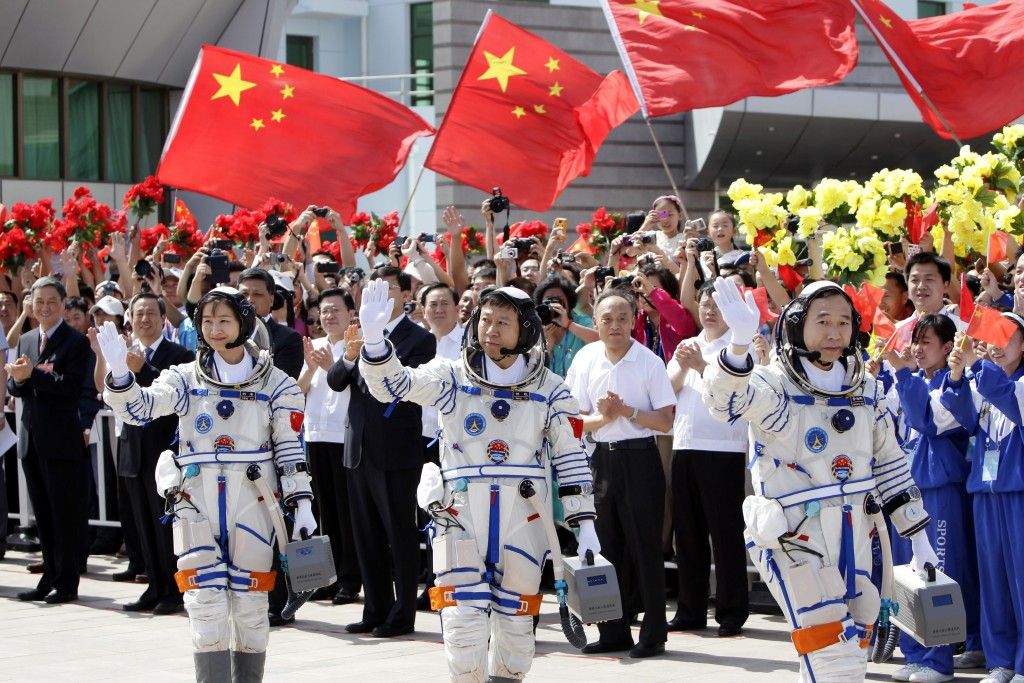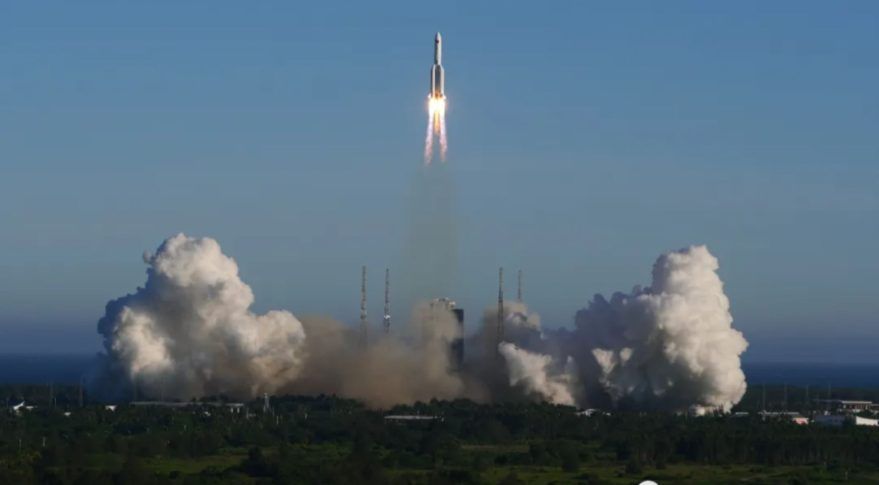China Leads Charge in Space Race
Article by Brandon J. Weichert September 3, 2020 (washingtontimes.com)
• China yearns to displace the United States as the dominant space power, and to inspire its people to make China a global hub of scientific research and development – the cornerstone of a knowledge-based economy. By placing the first rover on the dark side of the Moon in 2019, and by being the first nation to construct a lunar colony or to land ‘taikonauts’ on Mars, China is telling the world that it is truly the leader of today’s knowledge-based economy.
• But as China ascends, America is in decline. In 2019, on the 50th anniversary of the Apollo moon landings, a Harris Poll asked young people in both the United States and China what they wanted to be when they grow up. Most of the American youth surveyed said they wanted to be professional “Vlogger/YouTubers” when they grow up. The Chinese youth overwhelmingly aspired to be astronauts.
• In the 1970s and 80s, China made great wealth by becoming the world’s sweatshop. In the 1990s, China invested that wealth in infrastructure to build a large middle class and a stable economy. This was all part of China’s long-term plan to ultimately become the dominant knowledge-based economy in the world. Today, China is at the forefront of quantum computing, biotech, alternative energy, artificial intelligence, cloud computing and space technologies.
• In 2018, the head of China’s lunar program, Ye Peijian, put their national space ambitions this way: “The universe is an ocean, the Moon is [an island], Mars is [an island]. If we don’t get to [these islands] now, even though we’re capable of doing so, then we will be blamed by our descendants. If others go there, then they will take over, and you won’t be able to go even if you want to. This is reason enough [to go to the Moon and beyond].”
• Meanwhile, American leadership oscillates between indifference and abdication on the matter of space policy. President Donald J. Trump has developed a truly robust national space policy, but his policies and his new military branch, Space Force, are only met with derision by bureaucratic lawmakers. Democrats on Capitol Hill have already stated that Trump’s plans to return American astronauts to the lunar surface by 2024 will not be fiscally possible. NASA’s director of manned spaceflight challenges the very notion of successfully returning astronauts to the Moon before the decade is over.
• The future belongs to the country that wants it more. Without higher levels of funding, the Space Force will never mature into the robust force it must become to defend American interests in the strategic high ground of space. The American nationalist call to greatness is being squelched by the globalist demand for mediocrity. Without the embrace of nationalism in the United States, the country’s national mission in space will end in failure and its people will stop dreaming. America’s greatness will erode at every level.
• [Editor’s Note] How could America fall behind in the space race you ask? It was by design. Just after the Roswell crash in July 1947, Truman appointed twelve military, intelligence and scientific officials to form a secret group whose purpose was to hide from the public all evidence of the advanced extraterrestrial beings that were visiting the Earth, and to hide the fact that we were building our own space fleets and colonizing the solar system. This group is known as Majestic 12, and it still exists in the dark corridors of the deep state government’s power elite.
MJ-12 would use any means available to keep the truth from the American public, from ridiculing anyone who claimed to have seen a UFO or an alien being (and basically ruining their lives), to directing deep state funded media, scientists and academia to never take sightings seriously. The result has been generations of Americans who are conditioned to scoff at and ignore anything pertaining to UFOs and extraterrestrials. The deep state government doesn’t want people interested in exploring space. The deep state driven military hawks and corporate owners want to have space all to themselves – and the advanced space technology that goes with it. They simply deny that any of it exists. Deep state legislators routinely reject spending on space endeavors and laugh at the notion of a Space Force. They want to keep a lid on the enormous fraud that has been perpetrated on an unwitting public since World War II.
On the other hand, the Chinese have encouraged space exploration for both its national pride and to usurp American geopolitical and exopolitical dominance. Indeed, the deep state has become entrenched within the Chinese government as well, and will try to keep its space empire a secret. But how long can it be before countries such as China, Russia and India have pushed their way into deep space, and these ubiquitous deep state Secret Space Programs become obvious? The deep state won’t be able to hide the truth for very much longer.
On the 50th anniversary of the Apollo moon landings, Harris Poll asked young people in the United States and China what they wanted to be when they grew up. The results were strange. Most American youth surveyed — the young people who belonged to the only country to have ever placed astronauts on the lunar surface — admitted that they wanted to be professional “Vlogger/YouTubers” when they grew up. It was the Chinese youth

who overwhelmingly aspired to be astronauts.
Speaking to Chinese state media in 2018, the head of China’s lunar program, Ye Peijian, outlined the Chinese view of their national space strategy in explicit geopolitical terms, specifically in naval terminology: “The universe is an ocean, the moon is the Diaoyu Islands [sic], Mars is Huangyan Island. If we don’t get there now even though we’re capable of doing so, then we will be blamed by our descendants. If others go there, then they will take over, and you won’t be able to go even if you want to. This is reason enough [to go to the moon and beyond].”
China made great wealth by becoming the world’s sweatshop in the 1970s and ’80s. Throughout the 1990s, it reinvested that wealth into building out the infrastructure needed to both support an enlarged middle class and to ensure that China moved up the international development ladder.
China’s leadership never intended to remain just an industrial power subordinated to the United States in the post-industrial, knowledge-based
economy. China planned to become the dominant knowledge-based economy in the world. They have pioneered many innovations in the new industrial economy, notably 5G Internet, but are also heavily invested in quantum computing, biotech, alternative energy, artificial intelligence, cloud computing and space technologies.
For China, these new scientific innovations are not merely about making more money or even gaining a military edge over the West (Beijing certainly does care about those things). More than that, though, China yearns to displace the United States and dominant space power simply out of national pride.
FAIR USE NOTICE: This page contains copyrighted material the use of which has not been specifically authorized by the copyright owner. ExoNews.org distributes this material for the purpose of news reporting, educational research, comment and criticism, constituting Fair Use under 17 U.S.C § 107. Please contact the Editor at ExoNews with any copyright issue.


